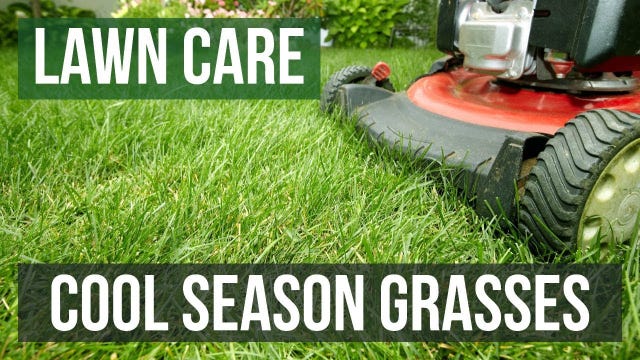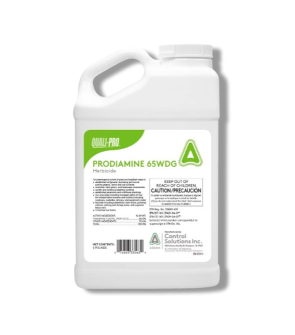Gain access to personalized product screening, the best pricing, rewards, and more!
Most Effective Products
Guide To Weed Control For Cool Season Grasses
If you live in the northern part of the United States, you may be familiar with cool-season grasses. In the uppermost third of the country, cool-season grasses are the only type of grass that grows, while the mid-portion is known as the transition zone, where both warm-season and cool-season grasses grow and overlap.
As opposed to warm-season grasses that thrive in a warmer climate, cool-season grasses grow well in areas with cooler climates and are able to endure colder temperatures better. However, while they have a better tolerance for cold weather, they do tend to brown out during the summertime, so they will require extra watering and maintenance in the warmer times of the year.
The most common cool-season grasses are Kentucky bluegrass, perennial ryegrass, fine fescue, and tall fescue. Cool-season grasses are usually divided into two broad categories: those that need a lot of sun and those that can handle shade or are shade-tolerant species that you can plant under trees. If you have a cool-season lawn, however, you still have to deal with the possibility of weeds appearing and uglifying your yard.
In this guide, we will look at how to manage weeds on cool-season grasses using proper cultural practices and the help of herbicides, which will keep your cool-season lawns looking great without the blemishes brought on by unwanted invasive weeds.
Identification
Several common weeds show up on cool-season grasses, so before you proceed with a treatment program, you need first to identify the problem weed. Here, we will share a few of the common varieties:
Carpetweed

This low-growing broadleaf annual weed found in lawns forms a thick mat and grows horizontally rather than upward, which is why it gets its name: it looks like a carpet. If there is no intervention, it can grow out of control everywhere.
Knotweed

Common knotweed is a low-to-the-ground spreading annual weed that starts in a small area, and there'll be a plant or two. Their thin stems form a thick mat separated by little knots or joints, which is how they earned their name.
Henbit

Henbit is a lightly hairy weed that grows annually in the wintertime and has delicate greenish-purple stems. Its other leaves are oval-shaped, with blunt points and veins on the underside of the leaf.
Dandelion
Dandelion is a common weed known for its dark green leaves that bunch up in a rosette pattern close to the soil surface. It grows large bright yellow flowers that gradually mature into puffy white seed heads. When the seeds are ready to be released, which can happen fairly quickly, they can easily be blown off by the slightest gust of wind.
Canada Thistle
Canada thistle grows in thick clusters and can choke out turfgrass where established. It can grow between 1 and 3 feet tall and blooms prominent flowers that look like light-purple puff balls.
Crabgrass
Crabgrass is an annual and perennial invasive grass that forms slender stems that grow out from a central root underground that resembles a crab's pinchers.
Sedge or Nutsedge
Nutsedge is a perennial weed that is neither a grass nor a broadleaf weed. Its distinctive characteristics include a triangular stem and a yellowish-green color.
Inspection
It is important to thoroughly inspect your lawn when you notice weeds and invasive plants emerging. An inspection will help determine what weeds are on your property so you know where they are concentrated, what conditions may be helping them thrive, and what herbicides may best control them.
Where to Inspect
Scan your lawn and look for the weeds described in the identification section. Some weeds appear at certain times of the year, known as summer or winter annuals, and perennial weeds, which are persistent yearly. Timing is important when inspecting for these weeds because catching them early when they are young and tender makes them more vulnerable to herbicide applications.
What to Look for
Closely observe the traits of the invading plant and determine what weed it is. It would be best to look at the surrounding environment for anything that can explain why the weed is thriving. Is the soil compacted? Are there drainage issues? Is your grass undergoing a lot of stress? Finding these answers can determine how you approach control.
Treatment
Once you have identified the weeds on your cool-season lawn, the next step is to eliminate them using herbicides. There are two types of herbicides: post-emergent and pre-emergent.
Pre-emergent herbicides are essentially a sort of birth control for weeds on your lawn and are used for prevention. They are best applied when you are aware of a particular weed that regularly grows at a certain time every year on your lawn, and you lay out a pre-emergent to prevent the weed from germinating.
Post-emergence herbicides are used to control visible weeds that are actively growing. The herbicide is sprayed on the foliage, where the plant absorbs the chemical, which travels down to its root system, killing the entire plant.
Timing is important no matter what herbicide you use. Pre-emergents should be applied to the lawn before plants have grown. The pre-emergent herbicide is ineffective if the target weed has already been established. For post-emergent herbicides, it's best to use them when weeds are in active growth, which is usually in the fall or spring. Applying herbicides outside these seasons will result in the herbicide performing slowly and can be a product waste.
Pre-Emergents For Cool Season Weed Control
Our top recommendation for pre-emergent control of most cool-season weeds is Prodiamine WDG. Prodiamine works by stunting the development of seeds at the beginning of the germination phase. It is labeled for most grasses, but it may be harmful to Annual Bluegrass, so if that is a desired grass on your lawn, use it with caution.
Determine how much Prodiamine you will need by calculating the square footage of your yard. To find the square footage, measure the treatment areas' length and width in feet, and multiply them together (length X width = square footage).
The maximum application rate can range from 0.185 oz. to 0.83 oz. per 1,000 sq. ft. per calendar year.
Mix the appropriate measured amount with water based on your calculations and apply it uniformly over your entire lawn.
Pre-emergent herbicides should be applied between March and April, depending on what part of the country you are in, to control summer annual weeds and in the late summer or fall to control winter annual broadleaf weeds and grasses.
Check the soil temperature to know exactly when to apply. Once temperatures have reached 55 degrees Fahrenheit at a 2” depth and after the risk of a hard frost has passed, this should be the best time. Depending on factors like weed history, weather, and soil type, a second application may be necessary to get control all season long.
Post-Emergents For Cool Season Weed Control
Our top recommendation for controlling post-emergence broadleaf and grassy weeds in cool-season turfgrasses is 2,4-D Selective weed killer. This is a selective herbicide, meaning it will only harm target weeds and spare desired cool-season grasses.
For small applications with a hand sprayer, mix between 0.72 to 1.1 fl. oz. in a gallon of water to treat 1,000 square feet. Fill your sprayer halfway with water, add the appropriate measured amount of 2,4-D, and then fill the rest with water. Apply the 2,4-D mixture to areas where unwanted vegetation grows, preferably on a fan spray setting, to ensure even coverage.
Post-emergent herbicide applications are most successful for summer annual weeds when weeds are young in late spring and early summer. For winter annuals and broadleaf perennials weeds, the best time to apply post-emergent herbicide products is in the fall, typically around the first frost.
Prevention
Cool-season lawn weed control requires a combination of sound cultural practices and choosing the right herbicides necessary to tackle the weeds and give your warm-season grass the advantage of keeping the weeds from thriving. Some lawn owners would rather not use chemicals on their lawns for weed management, so it is possible to eliminate weeds without using herbicides.
Weeds that appear on turfgrass, whether cool-season or warm-season, usually rear their ugly seedheads because of something that the lawn maintainer is or isn't doing. In other words, the lawn maintenance practices required for healthy cool-season grass that will resist or choke out invasive weeds are either not done properly or are neglected.
For example, some reasons for the appearance of weeds include mowing with a blunt blade or mowing at a height that isn't conducive to the health and benefit of your lawn. Other issues include soil compaction due to foot traffic or poorly drained areas.
Correcting these practices and issues (via applying the right nutrient combination of fertilizer for your lawn, proper mowing, and watering) can go a long way in promoting a thick, lush, nutrient-rich turf that will choke out invasive weeds trying to establish themselves and prevent weeds from growing on your property.
That said, there are some species of broadleaf weeds for which improving cultural practices will not be enough to eliminate them. This is when herbicides may be necessary to add to your control plan to sufficiently get rid of whatever weed is plaguing your cool-season lawn.
Key Takeaways
- Cool-season grasses are not immune to pesky weeds—invaders like carpetweed, henbit, dandelion, and crabgrass commonly plague cool-season turf.
- We recommend Prodiamine 65 WDG for pre-emergent control of most cool-season weeds and 2,4-D Amine Selective Weed Killer for post-emergent control.
- Proper grass management practices and persistent use of the right herbicides at the right times will successfully remove weeds from cool-season grasses.

















